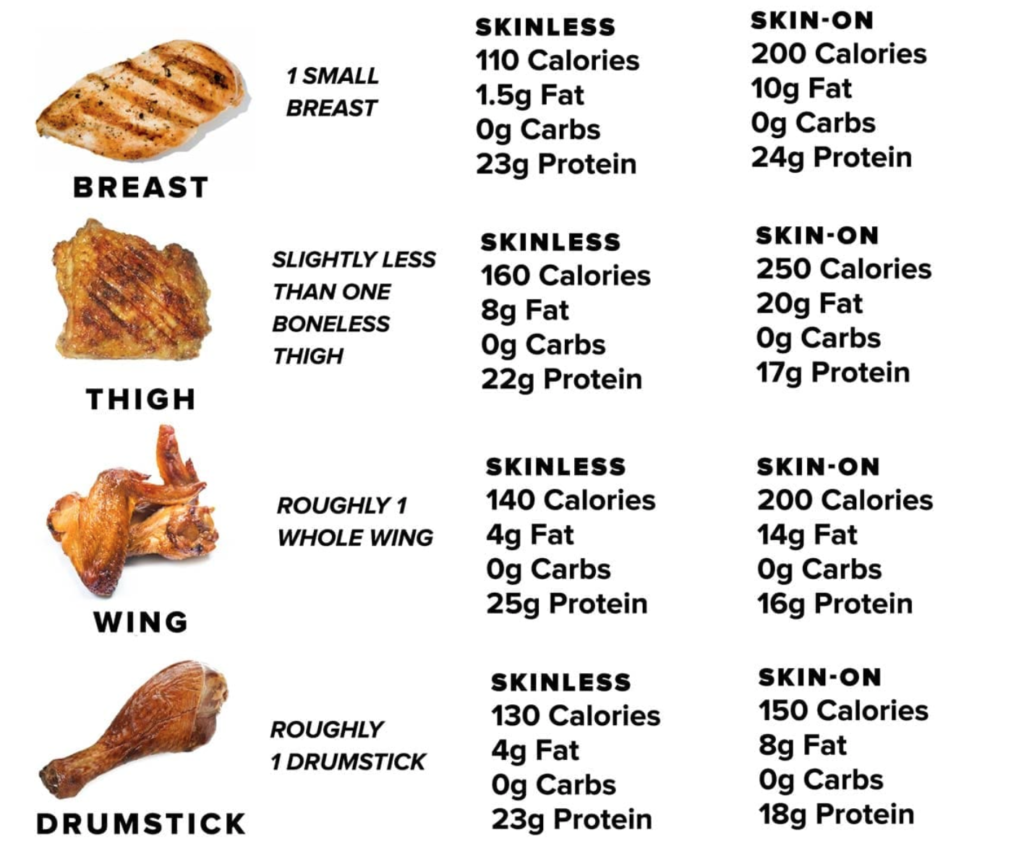
Chicken breast is the leanest cut of chicken. It contains the highest amount of protein by weight as compared to other cuts. The protein to fat ratio of skinless chicken breast is (9:1). It is ideal for people who want to maintain muscle mass, fasten the recovery process, and lose weight. Relatively fattier cuts such as thigh, drumstick, and wings are helpful for people who want to build muscle or gain weight as it has more calories per portion.
Nutritional values per 100 grams of cooked cuts of skinless chicken:
- Whole Chicken: 24 grams of protein, 13.4 grams of fat, 239 calories
- Chicken Breast: 31 grams of protein, 3.6 grams of fat, 165 calories
- Chicken Thigh: 26 grams of protein, 10.9 grams of fat, 209 calories
- Chicken Wings: 30.5 grams of protein, 8.1 grams of fat, 290 calories
- Chicken Drumstick: 28 grams of protein, 5.7 grams of fat, 175 calories
Chicken skin is the fattiest part of the chicken. It contains 41 grams of fat per 100 grams. Even though most of the fat found in chicken is healthy unsaturated fats, you can remove the skin of the chicken to lower the fat content.
The high protein content of chicken helps in repairing muscle tissue and safeguard muscles from damage during hard training routines. B-vitamins and Niacin present in chicken helps in converting protein, fat, and carbohydrates into usable energy. Selenium helps repair damaged cells and kill cancerous cells, Zinc and iron help in boosting the immune system, regulating thyroid function, increasing metabolism, and supporting the production of hormones in the body.
Use healthy food preparation methods such as boiling, baking, roasting, grilling for regular consumption. Boiled chicken breast is one of the best preparation for people who want to lose weight and help people reach their fitness goals like muscle building and maintenance.
Ensure you are adding a lot of veggies alongside to have a nutritionally balanced diet, which goes a long way in ensuring overall health.
Nutritional data SOURCE: USDA National Nutrient Database for Standard Reference (http://www.nal.usda.gov/fnic/foodcomp/search/)
